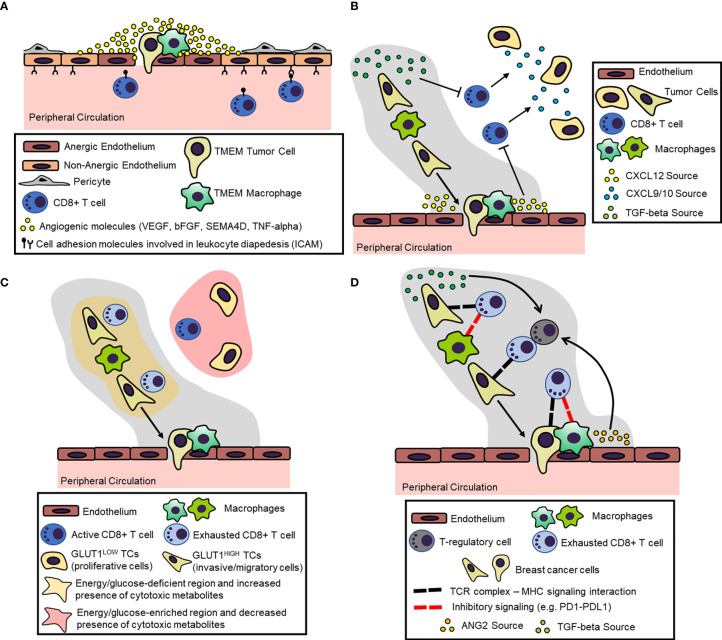Figure 3.
Proposed Mechanisms for the Induction and Maintenance of an Immunosuppressive Microenvironment within the Dissemination Trajectory. (A) Dissemination trajectories as beacons of endothelial anergy. Perivascular (TMEM doorway) macrophages secrete a number of proangiogenic factors (e.g. VEGFA) in the peri-TMEM area, which downregulate cell adhesion molecules in endothelial cells critical for lymphocyte diapedesis, thus resulting in “locally” anergic endothelium. (B) Dissemination trajectories as crossroads for T cell exclusion. Cytokine/cytokine receptor mismatching mechanisms within the dissemination trajectories result in the exclusion of T cells. For example, prometastatic macrophages suppress the expression CXCL9/10 within the dissemination trajectories, which function as the primary chemoattractants for T cells. Instead, dissemination trajectories are characterized by the expression of other cytokines/chemokines, like TGF-beta and CXCL12, which act as repellents for T cells. (C) Dissemination trajectories as primers for metabolic burdening of T cells. Highly migratory tumor cells within the dissemination trajectories tend to upregulate glucose transporters (e.g., GLUT1), which on one hand reduces the bioavailable energy resources (i.e., glucose), while on the other hand, may produce metabolites. This metabolic landscape is burdensome for immune cells, resulting in T cell exclusion and exhaustion. (D) Dissemination trajectories as checkpoints for T cell exhaustion. Chronic TCR signaling within the dissemination trajectory along with overexpression of inhibitory ligands (e.g., PDL1) by the prometastatic macrophages may result in T-regulatory (Treg) cell expansion and CD8+ T cell inactivation/exhaustion.

